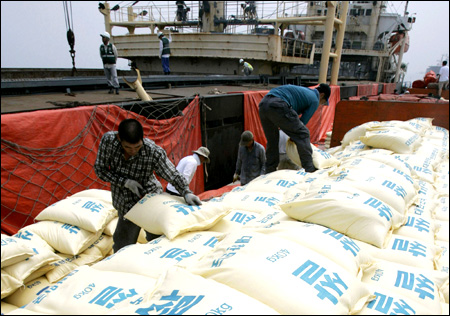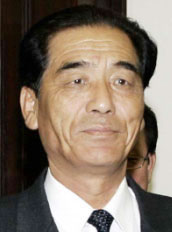Korea Times
Andrei Lankov
7/8/2007
 Nowadays, the severity of famine appears to be a thing of the past _ at least outside Africa. Indeed, modern technology makes it possible to feed crowded cities almost effortlessly. Thus, any reports of famine nowadays can be argued to be the direct result of mismanagement and deliberate political decisions. The recent North Korean famine of 1996-2000 vividly demonstrates this and supports such a theory.
Nowadays, the severity of famine appears to be a thing of the past _ at least outside Africa. Indeed, modern technology makes it possible to feed crowded cities almost effortlessly. Thus, any reports of famine nowadays can be argued to be the direct result of mismanagement and deliberate political decisions. The recent North Korean famine of 1996-2000 vividly demonstrates this and supports such a theory.
Stalinist agriculture has never been very efficient. The lack of incentive makes it sluggish and wasteful. However, in some cases, the heavy investments in machinery and fertilizers did, in fact, help to overcome some of the deficiencies created by the inept social system.
This was the case in North Korea. In the late 1950s all North Korean farmers were herded into the so-called “agricultural co-operatives.’’ While less restrictive than the “people’s communes’’ in Mao’s China, they imposed a harsher control than Stalin’s “kolkhozs.’’
The North Korean government invested heavily in agriculture. Its efforts produced a remarkably energy-intensive agricultural system. Electric pumps were running huge irrigation projects; chemical fertilizers and tractors were used on a grand scale. In attempts to reclaim arable land, steep hills were made into terrace fields. These fields, endorsed by Kim Il-sung himself, remained the poster image of North Korean agriculture until the mid-1990s.
Initially these efforts seemingly paid off. In the 1980s North Korea produced some 5-6 million tons of grain (largely, rice and maize) a year. Its population never enjoyed anything like the present-day South Korean abundance: meat or fruits were rare delicacies. Nonetheless, the 6 million tons of grain was sufficient to feed the country’s population. This was done through the rationing system. Depending on one’s position in the complicated hierarchy of social groups, daily rations varied from 500 to 900 grams per adult _ sufficient to provide enough calories.
But in 1991 the situation changed. The much trumpeted “self-reliance’’ of North Korea proved to be a complete fake. The Soviet decision to discontinue sales of oil and other goods at hugely discounted prices wrought havoc in the country’s economy. The agricultural sector was especially vulnerable, since without the heavy input of energy and resources it stood no chance of survival. Tractors required diesel oil, which was not forthcoming, and electric pumps could not operate when power stations were idle due to a shortage of spare parts.
In 1992-1993 the North Korean media began to argue the benefits of having only two meals a day as opposed to the traditional three, claiming the latter was unhealthy and excessive. By 1994, people in some remote areas could not get food for days at a time. They were issued the usual rationing coupons, but no foodstuffs were available in the shops. Rations were also cut. These were signs of things to come.
However, the North Korean government did not follow the example of China or Vietnam, where the return to private agriculture led to an instant revival in food production. In the early 1990s the Pyongyang leaders saw how the reformist Communist governments of East Europe had been wiped out, and they considered any reform potentially dangerous to their own survival. Thus, no reform was undertaken, and in the years 1992-1995 agricultural production continued its free fall.
And then the real catastrophe came. In July and August 1995 unusually heavy rains led to disastrous floods. The North Korean authorities blamed the floods for all subsequent developments. In the aftermath of the disaster, they even decided to break with the decades-old tradition of covering or playing down all the problems of their country. Pyongyang stated that some 5.4 million people had been displaced by the 1995 floods (the subsequent U.N. survey indicated that the actual figure was much smaller _ probably, by an order of ten). Politically, this was understandable: if the country was hit by a natural disaster of unprecedented proportions, the authorities were not to be held responsible!
There is, however, good reason to doubt these statements. After all, the Korean Peninsular is small, but impact of the very same floods on the South was negligible. However, the contribution of the flood to the disaster is undeniable. The already strained power grid was destroyed, and entire irrigation systems were wiped out. Most of the terrace fields, the pride of the “juche agriculture,’’ were simply washed away.
In 1996, the country harvested some 3 million tons of grain _ just above half the pre-crisis level. This meant famine. It was to last for four years and take between half million and one million lives.

